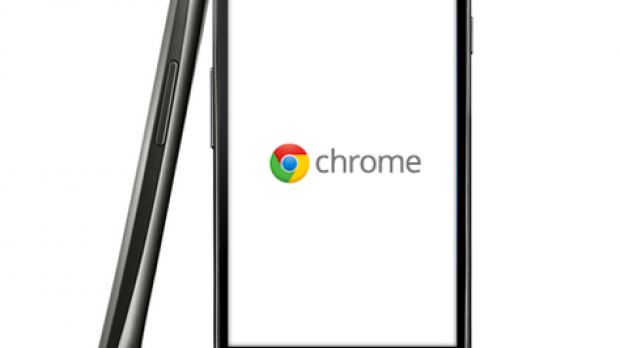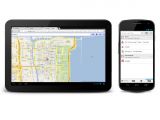Chrome for Android has finally landed. It's a pretty big project and it meant rewriting and adapting most of the existing Google Chrome code to the Android platform and the special requirements of mobile devices.
While the Android browser already shared several components with Chrome, they were different beasts.
Even the new Chrome for Android, while based on the desktop Chrome, has plenty of custom code and has plenty of things left out as well. That said, Chrome for Android is a huge improvement over the default Android browser.
Tabs and UI
For one, the interface has been revamped. While it is inspired by Chrome for desktop, it is completely custom for the mobile version and probably shares more with the default browser UI.
The big emphasis is on tabs. While they're still not visible in the phone version, for obvious reasons, they're much easier to reach since there is now a tab access button built into the main toolbar.
Tab switching is one of the main attractions of Chrome for Android, it borrows from mobile UI design and enables users to switch through tab "stacks" with the flick of a finger.
Once you get the hang of it, it's much faster to switch from one tab to the other.
Chrome for Android boasts that you can load unlimited tabs, though there is a soft limit of sorts of 99 tabs. Chrome is able to do this since it "freezes" background tabs and stores them away, freeing up memory and CPU usage, bringing them back when you switch to them.
For the tablet version, Chrome comes with actual tabs, making use of the bigger screen, but uses some of the same tricks as the phone version does, for switching between them, for example.
There are plenty of little animations that liven up the browser, for example when opening a new tab or switching to a new one. Overall, from an UI perspective, it's a big improvement over the native browser.
OmniBox
One of Chrome's innovations was the OmniBox, the unified search box and address bar. It's present in the Android version of the browser as well. Start typing and you'll get suggestions for web searches, sites from your history or your bookmarks.
Sync
Another thing that Chrome for Android boasts is data sync with the desktop version. The browser in Android 3.0 and 4.0 already had some sync features, like bookmarks, but the feature is finally complete in Chrome for Android.
Bookmarks, history, suggestions, passwords, almost everything that is synced in the desktop version is synced in the mobile one and more, the "more" being tab sync.
You'll be able to load the tabs you left open on your desktop browser and continue where you left off. You can even use the back button on the loaded pages and you'll be directed to any of the previous pages you visited on your desktop.
Sync only works if you're signed into your Google account, of course. Also, tab sync only works if your desktop browser is running, even if you close the lid on your laptop. If you close the browser completely though, there will be no "open" tabs to sync.
Incognito
If sync is not your thing, Chrome for Android also comes with the exact opposite, private browsing via Incognito mode. Sites visited in this mode will not show up in your history and cookies from them won't be stored.
Speed
One thing that has defined Chrome, from the get go, is speed and the Android version is no exception. The team focused a lot on speed, in the UI, in loading pages, zooming and so on.
The UI feels rather snappy, thanks in part to the hardware acceleration in Android 4.0 Ice Cream Sandwich. Unfortunately, that's one of the big reasons why Chrome for Android is only available for ICS devices.
Another trick employed to speed things up is one employed by the desktop browser as well, pre-loading pages that Chrome predicts you want to visit next.
For example, if you type "y" in the OmniBox and you visit YouTube a lot, on your phone or on the desktop, youtube.com will begin to load in the background before you've finished typing or selecting the site from the suggestions.
This feature is only enabled by default when using WiFi, to save on bandwidth, but you can make it permanent as well. Based on Chrome 16, only available for ICS
Chrome for Android is in beta, just like the first Chrome debuted in beta. It's based on Chrome 16, technically, Chrome 16.0.915.75. It's also only available for Android 4.0 ICS, Google says because it uses some specific APIs, and it won't be made available for previous versions of Android.

 14 DAY TRIAL //
14 DAY TRIAL // 


